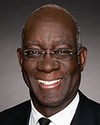Thank you, Mr. Chair and members of the committee, for the opportunity to be here today.
My name is Oliver Thorne. I'm the executive director of the Veterans Transition Network, which is a registered Canadian charity that provides counselling and transition programs for members and veterans of the Canadian Armed Forces. We deliver these programs across Canada for men and women, in English and French.
I just want to apologize to the francophone members of the Standing Committee on Veterans Affairs, because I'll be delivering my opening statement in English since my time is limited.
While employment is a common topic of discussion on our programs, the focus of the programs we deliver at VTN is on mental health, family relationships and the military-to-civilian transition. While I'm not by any means a subject matter expert in veteran employment, I can certainly provide the perspective of an organization that has provided transition services for veterans for over a decade.
With that in mind, I want to focus my testimony on two major topics today: access and cultural transition.
In the first place, in our experience delivering services to veterans across Canada for 10 years, a key issue they face in the success of any service they receive is the issue of access. A good employment program will not be effective if it is not accessible to veterans, and particularly if it's not accessible to veterans who struggle the most in transition.
We know from the research that there are a number of criteria associated with a greater difficulty in transition, including a longer service history, involuntary release, service in the junior ranks, service in the army and deployment. These are all associated with greater difficulty in transition after service.
My first recommendation is that if a veteran employment strategy is going to be effective, it must be built with the needs of these veterans in mind. To go even further, with these veterans specifically, for those who are struggling the most it is very likely that they will need other, more immediate transition and rehabilitation services before they are ready to receive employment services.
My second recommendation is that there should be a strong relationship between the veterans rehabilitation program and the services provided through the employment strategy, so they can refer back and forth and ensure that veterans don't slip through the cracks.
The second issue is cultural transition. For veterans, their employment transition occurs at the same time as a significant and major cultural and lifestyle transition. A good employment strategy has to acknowledge this fact and provide the appropriate supports to help veterans navigate that cultural transition so they can be successful in their civilian education and employment after service.
In our experience as a service provider, we see veterans reporting two major gaps. The first is a skills gap in certain skills that are required in a civilian environment versus those in the military. We see this particularly in professional communication style, and in financial literacy as well. These are pieces that both the private sector and the education sector do a very good job of preparing people for when they go out into the working world after post-secondary education, but the requirements in these areas in the military and civilian context are quite different.
Once again, for an employment strategy to be successful, it must consider that and it must provide practical training to help bridge that skills gap.
The second gap that we see reported is around social support. Particularly for veterans moving from a service environment to post-secondary education, we see that very often their experience—where they are in terms of their personal transition and lifestyle—is quite different from the environment of other people around them in that context. Providing the appropriate supports so that their needs can be met and they have a place where they can interact with peers and receive social support is going to be critical to the success of those education and employment programs.
With that, thank you again for the opportunity to present. I welcome your questions.




